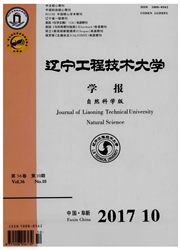

 中文摘要:
中文摘要:
为研究动力弹射型岩爆发生机理和破坏特征,结合岩爆现场实录资料及理论分析,建立模拟动力弹射型岩爆的变截面杆模型,提出系统相对稳定度的概念,并分析了影响系统相对稳定度的参数,建立岩爆体应变率的反馈环,最后实验模拟了岩爆过程.结果表明,岩爆是由于隧洞围岩局部应力集中造成的,弹性体与岩爆体体积比、弹性体弹性模量与岩爆体软化系数之比均与系统相对稳定度呈负相关,岩爆发生的过程是一个正反馈调节的过程,在岩爆发生前,弹性体与岩爆体应变能持续累积,岩爆发生时瞬时释放,造成碎块弹射.分析结论与实验结果为研究动力弹射型岩爆的发生机制提供了参考.
 英文摘要:
英文摘要:
In order to research the occurrence mechanism and failure characteristics of dynamic ejection rock-burst, this paper combined memoir data of rock-burst field with theoretical analysis, established the model of variable cross-section bar used to simulate dynamic ejection rock-burst, and put forward the concept of the relative stability of system. The parameters having influences on the relative stability of system were analyzed, the feedback loop of strain ratio of rock-burst body was built, and the rock-burst process was simulated by experiment. The results show that rock burst is caused by local stress concentration of tunnel surrounding rock, the volume ratio of elastomer and rock-burst body. The ratio of elastic modulus of elastomer and the softening coefficient of rock-burst body are negative related to the relative stability of system, and the process of rock-burst is positive regulation. Before the occurrence of rock-burst, the strain energy of elastomer and rock-burst body sustainable accumulates and instantaneous effect release when rock-burst occurs, which leads to fragment ejection. Both the analysis conclusion and experimental result provide references for the research of occurrence mechanism of dynamic ejection rock-burst.
 同期刊论文项目
同期刊论文项目
 同项目期刊论文
同项目期刊论文
 期刊信息
期刊信息
